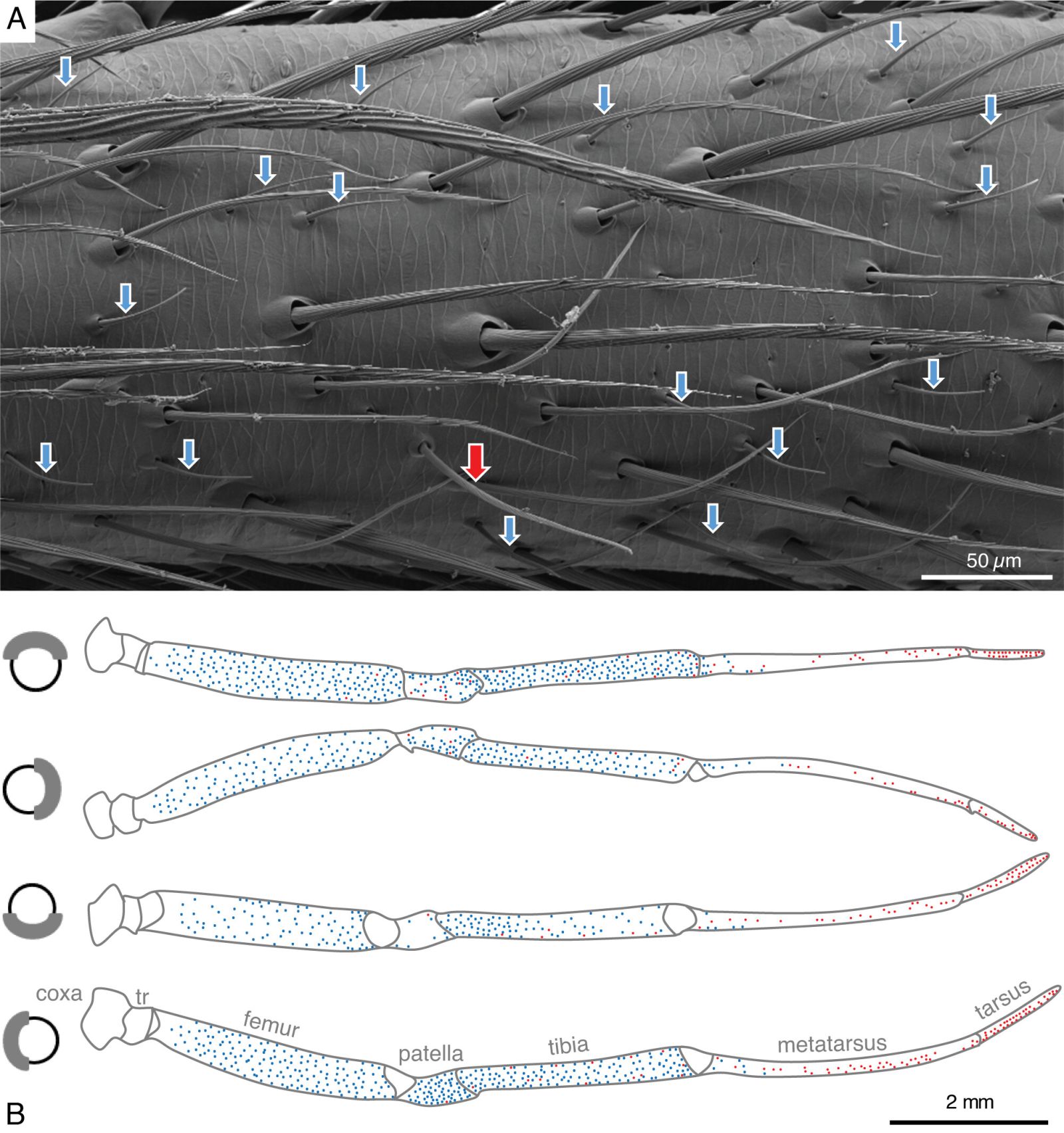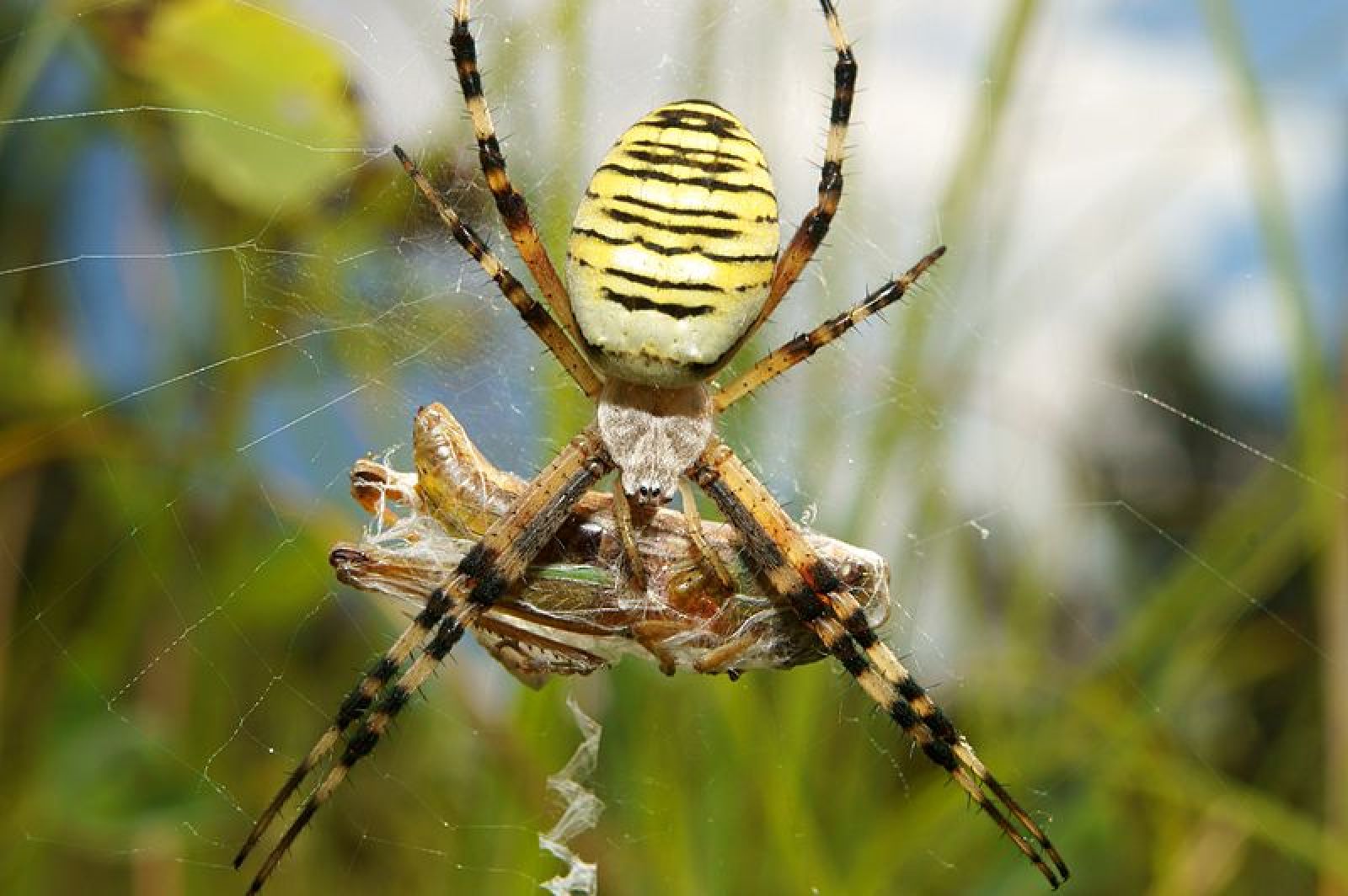Discovery: spiders smell with... their legs! 🕷️
Published by Cédric,
Article author: Cédric DEPOND
Source: Proceedings of the National Academy of Sciences
Other Languages: FR, DE, ES, PT
Article author: Cédric DEPOND
Source: Proceedings of the National Academy of Sciences
Other Languages: FR, DE, ES, PT
Follow us on Google News (click on ☆)
For a long time, scientists were unsure how spiders perceived smells, particularly sexual pheromones. Unlike insects, they do not have antennae. A team of researchers has finally identified the structures responsible for this olfactory ability in male spiders, opening the door to new questions about females.
An unexpected discovery
The researchers studied the wasp spider (Argiope bruennichi), a common species in Europe. Using a high-resolution scanning electron microscope, they discovered thousands of sensory structures, called "sensilla," on the legs of males. These sensilla, absent in females and juveniles, play a key role in detecting pheromones.

Distribution of wall-pore sensilla (wp-sensilla) and tip-pore sensilla (tp-sensilla) on the first walking leg of a male A. bruennichi.
- (A) Representative area of the tibia showing 16 wp-sensilla (light blue arrows) and a longer, S-shaped tp-sensillum (red arrow).
- (B) Distribution map of chemosensilla, top view, prolateral, ventral, and retrolateral (from top to bottom).
Labels: light blue dots: wp-sensilla; red dots: tp-sensilla; tr: trochanter. See the supplement for maps of the 2nd, 3rd, and 4th legs.
These structures are located on the upper part of the legs, an area rarely in contact with surfaces. This location suggests they are specialized in detecting airborne odors, rather than substances on the ground.
Exceptional sensitivity
Experiments showed that the sensilla respond to tiny amounts of pheromones. A dose of 20 nanograms is enough to trigger a neural response. This sensitivity rivals that of insects, which are renowned for their efficient olfactory systems.
The researchers also tested several spider species, confirming the presence of these structures in the majority of males. However, some primitive species lack them, indicating a complex evolution of this trait.
Unanswered questions
If males use their legs to smell, how do females perceive odors? This question remains unanswered. Additionally, researchers do not know what other chemical substances spiders can detect and how this influences their behavior.
These discoveries open new perspectives for understanding the evolution of senses in spiders. They also highlight the importance of olfaction in their survival and reproduction.
